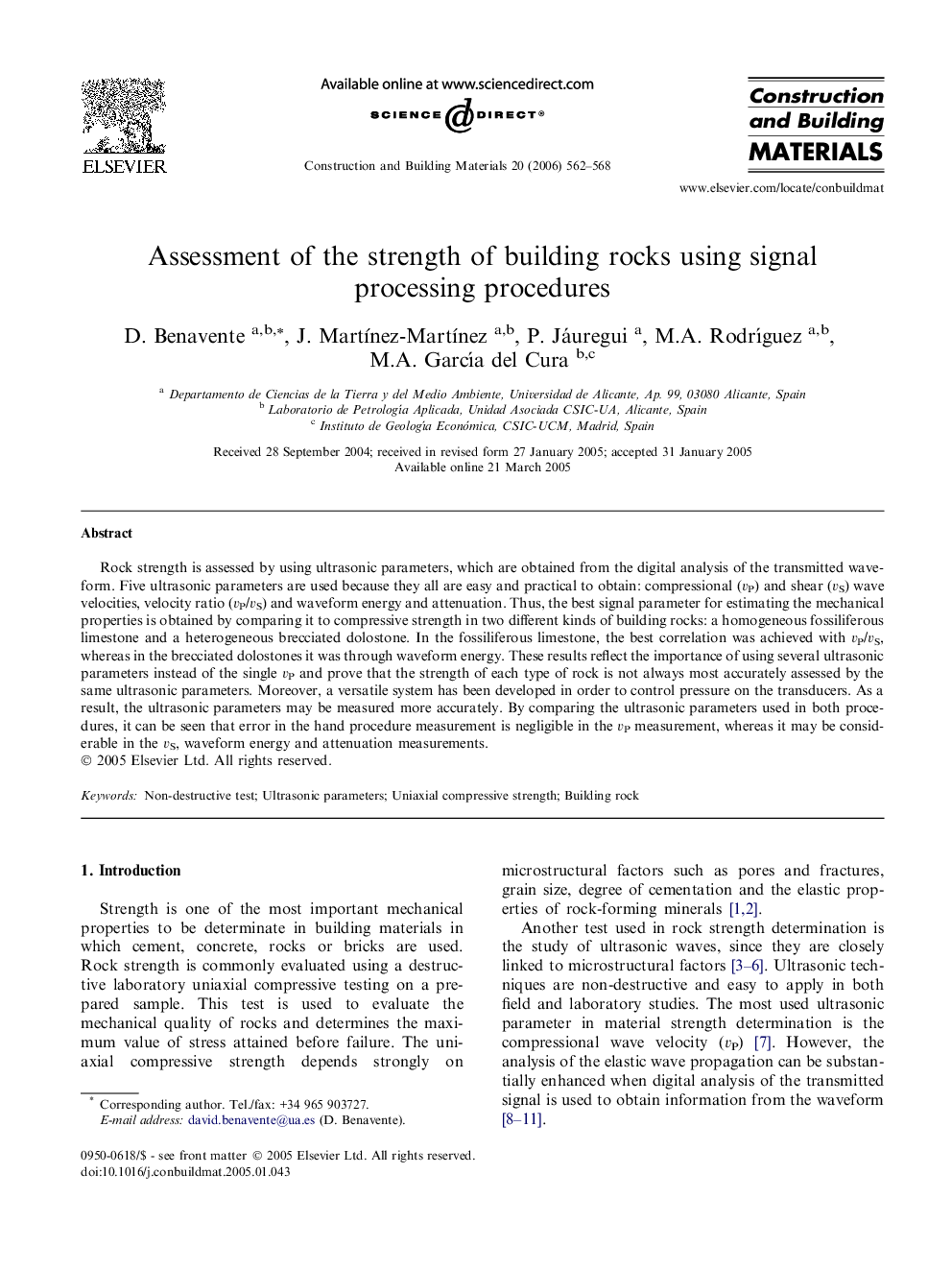| Article ID | Journal | Published Year | Pages | File Type |
|---|---|---|---|---|
| 261385 | Construction and Building Materials | 2006 | 7 Pages |
Rock strength is assessed by using ultrasonic parameters, which are obtained from the digital analysis of the transmitted waveform. Five ultrasonic parameters are used because they all are easy and practical to obtain: compressional (vP) and shear (vS) wave velocities, velocity ratio (vP/vS) and waveform energy and attenuation. Thus, the best signal parameter for estimating the mechanical properties is obtained by comparing it to compressive strength in two different kinds of building rocks: a homogeneous fossiliferous limestone and a heterogeneous brecciated dolostone. In the fossiliferous limestone, the best correlation was achieved with vP/vS, whereas in the brecciated dolostones it was through waveform energy. These results reflect the importance of using several ultrasonic parameters instead of the single vP and prove that the strength of each type of rock is not always most accurately assessed by the same ultrasonic parameters. Moreover, a versatile system has been developed in order to control pressure on the transducers. As a result, the ultrasonic parameters may be measured more accurately. By comparing the ultrasonic parameters used in both procedures, it can be seen that error in the hand procedure measurement is negligible in the vP measurement, whereas it may be considerable in the vS, waveform energy and attenuation measurements.
